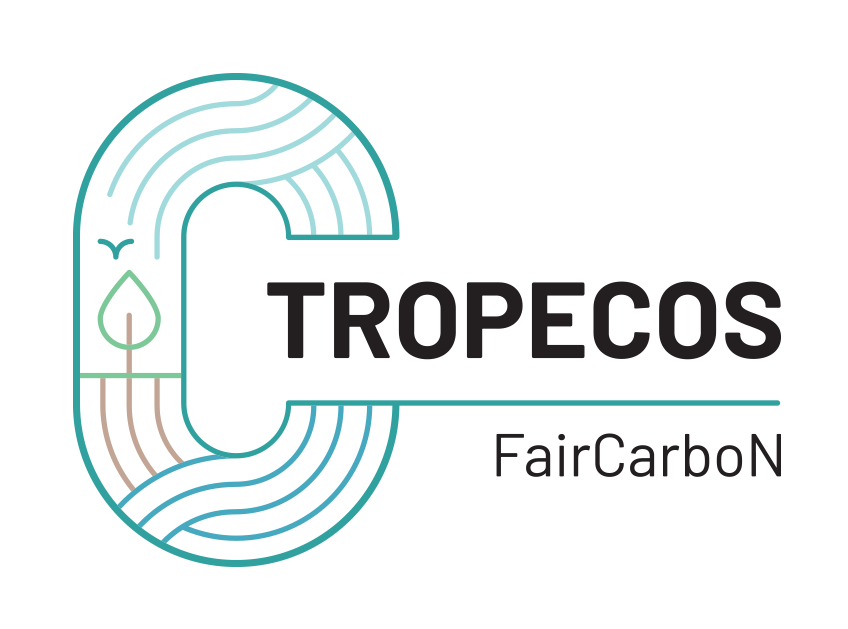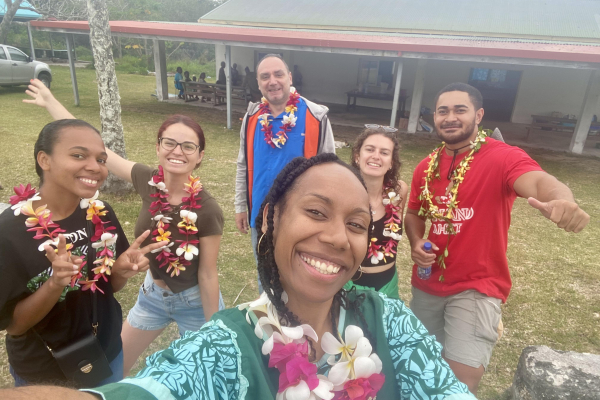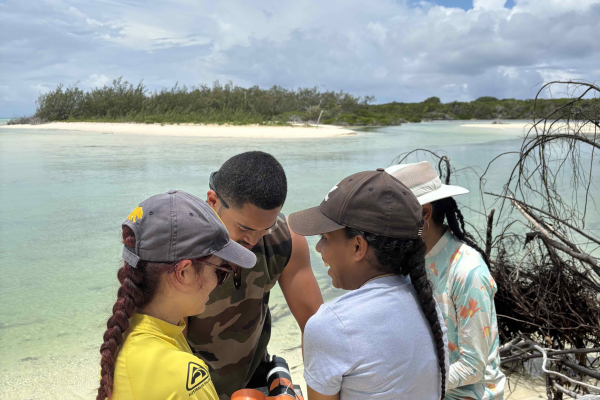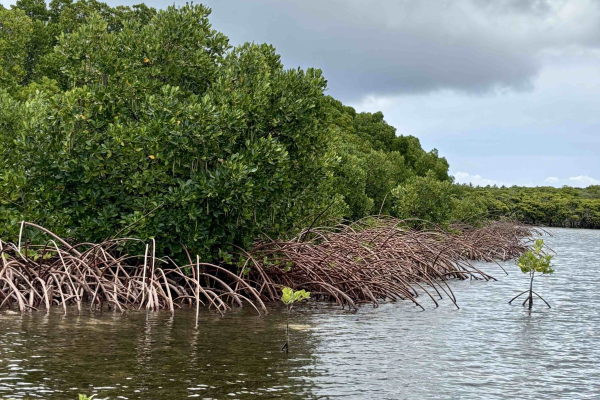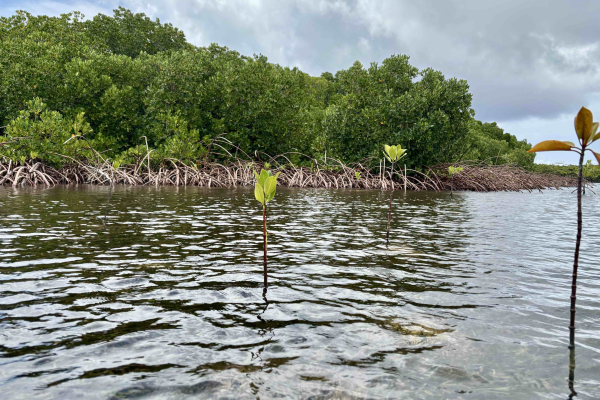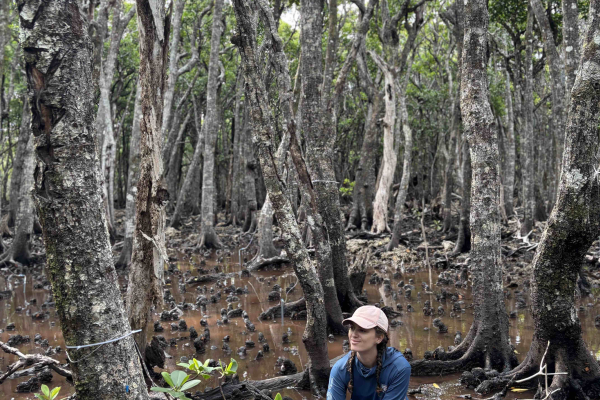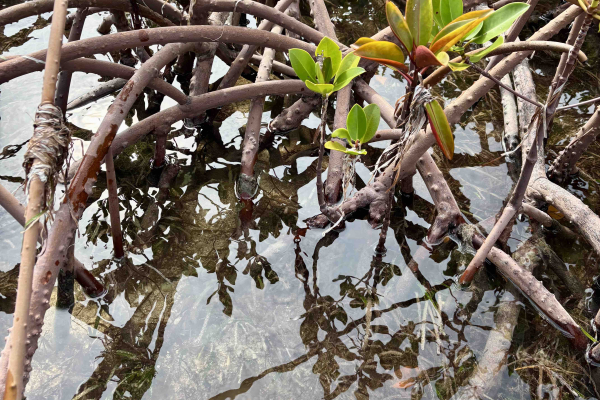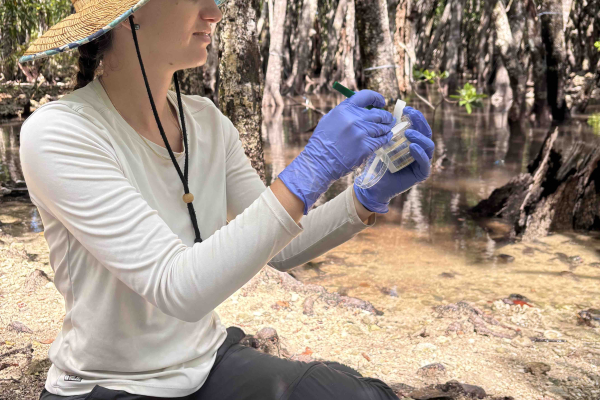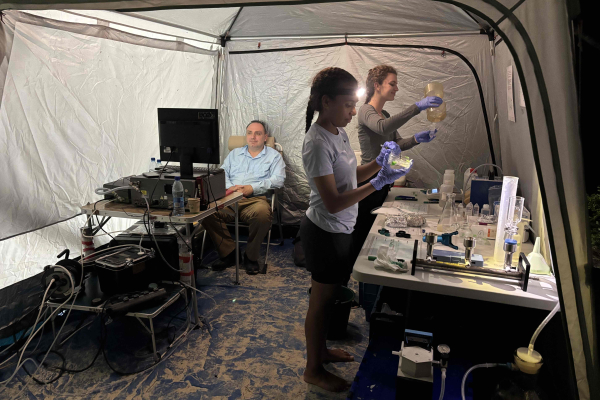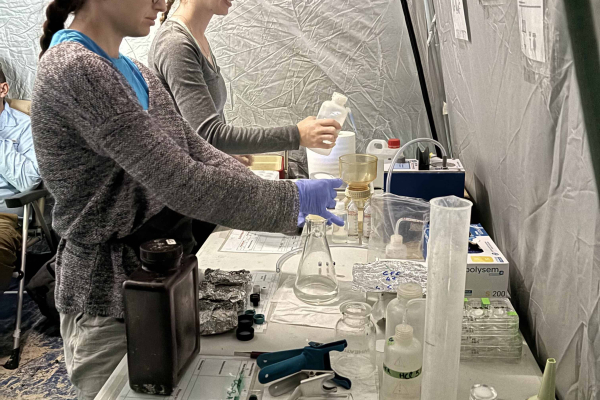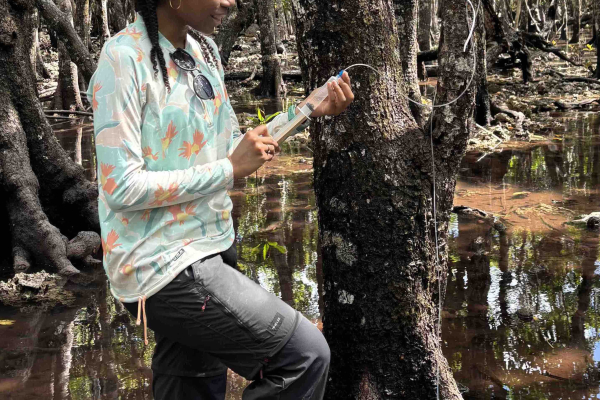This TROPECOS fieldwork in the mangroves of Ouvéa involved a team of six scientists, including a researcher, two PhD students, a post-doc, a researcher technician and an intern from University of New Caledonia.
The week-long mission was made possible through the agreement of the landowners from the Téouta tribe and the hospitality of the women’s association in the Téouta tribe (FAI DOHU association).
During this fieldtrip, the team performed 24-hour cycle in order to quantifying and qualifying the exports of organic and inorganic carbon, as well as tracking water and carbon cycles at the mangrove’s outflow during the dry season. Different parameters: pressure, salinity, dissolved oxygen, pH, alkalinity, temperature, CDOM (Chromophoric Dissolved Organic Matter)/FDOM (Fluorescent Dissolved Organic Matter), DOC (Dissolved Organic Carbon)/TN (Total Nitrogen), δ¹³C/DIC (Stable Carbon Isotope Ratio of Dissolved Inorganic Carbon), δ¹³C/CO2 (Stable Carbon Isotope Ratio of Carbon Dioxide),Stable water isotopes (δ¹⁸O et δ²H ), Chlorophyll-a, TSS (Total Suspended Solids), POC (Particulate Organic Carbon)/TN (Total Nitrogen), radon, Dissolved Metals (ICP-MS/Polaro), Particulate Metals (ICP-MS), radon, current sensors were deployed to analyze tidal pumping, flushing, and the exchange of fluxes between the mangrove and the lagoon.
